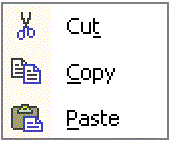 A version of this article first appeared in Funding Insight in November 2018 and is reproduced with kind permission of Research Professional. For more articles like this, visit www.researchprofessional.com
A version of this article first appeared in Funding Insight in November 2018 and is reproduced with kind permission of Research Professional. For more articles like this, visit www.researchprofessional.com
Given the ever-expanding requirements of most research funding application forms, it’s inevitable that applicants are tempted to pay less attention to some sections and end up writing text so generic, so bland, that it could be cut and pasted – with minimal editing of names and topics – into almost any other proposal.
Resist that temptation. Using text that looks like it could be cut and pasted between proposals suggests that you haven’t thought through the specifics of your project or fellowship, and it will make it seem less plausible as a result.
Content free
I often see responses that are so content free they make my heart sink. For example:
1) “We will present the findings at major international conferences and publish in world class journals”
2) “The findings will be of interest to researchers in A, B, and C.”
3) “This is a methodologically innovative, timely, and original project which represents a step change in our understanding”
4) “We will set up a project Twitter account and a blog, and with the support of our outstanding press office, write about our research for a general audience.”
5) “Funding will enable me to lead my own project for the first time, and support me in making the transition to independent researcher”.
These claims might well be true and can read well in isolation. But they’re only superficially plausible, and while they contain buzzwords that applicants think that funders are after, they’re entirely content, evidence, and argument free.
Self harm
Why should you care? Because your proposal doesn’t just have to be good enough to meet a certain standard, it has to be better than its rivals. If there are sections of your application that could be transferred into any rival application, this might be a sign that that section is not as strong or distinctive as it could be and is not giving you any competitive edge.
Cut and paste sections may be actively harming your chances. They may read well in isolation but when compared directly to more thoughtful and more detailed sections in rival applications, they can look weak and lazy, especially if they don’t take full advantage of the word count.
Cut and pasteable text tends to occur in the trickier sections of the application form to write and those that get less attention: dissemination; impact pathway/plan; academic impact; personal development plan; data management plan; choice of host institution. Sometimes these generic statements emerge because the applicants don’t know what to write, and sometimes because it’s all they can be bothered to write for a section they wrongly regard of lesser importance.
Give evidence
Give these sections the time, attention and thought they deserve. Add details. Add specifics. Add argument. Add evidence. Find things to say that only apply to your application. If you don’t know how to answer a question strongly, get advice from your research development colleagues.
The more editing it would take to put it into someone else’s bid, the better. Here are some thoughts on improving the earlier examples:
1) “We will present the findings at major international conferences and publish in world class journals”. I find it hard to understand vagueness about plans for academic impact. Even allowing for the fact that the findings of the research will affect plans, it’s surely not too much to expect some target journals and conferences to be named. If applicants can’t demonstrate knowledge of realistic targets, it undermines their credibility.
2) “The findings will be of interest to researchers in A, B, and C.” I’d ban the phrase “of interest to” when explaining potential academic impact. It tells the reader nothing about the likely academic impact – who will cite your work, and what difference do you anticipate it will make to the field?
3) “This is a methodologically innovative, timely, and original project which represents a step change in our understanding” Who will use your methods? Who will use your frameworks? If all research is standing on the shoulders of giants, how much further can future researchers see perched atop your work? How exactly does your project go beyond the state of the art, and what might be the new state of the art after your project?
4) “We will set up a project Twitter account and a blog, and with the support of our outstanding press office, write about our research for a general audience.” If you’re talking about engaging with social media, talk about how you are going to find readers and/or followers. What’s your plan for your presence in terms of the existing ecosystem of social media accounts that are active in this area? Who are the current key influencers?
5) “Funding will enable me to lead my own project for the first time, and support me in making the transition to independent researcher”. How does funding take you to what’s next? What’s the path from the conclusions of this project to your future research agenda?
Looking for cut and paste text – and improving it where you find it – is an excellent review technique to polish your draft application, and particularly to improve those harder-to-write sections. Hammering out the detail is more difficult, but it could give you an advantage in the race for funding.
